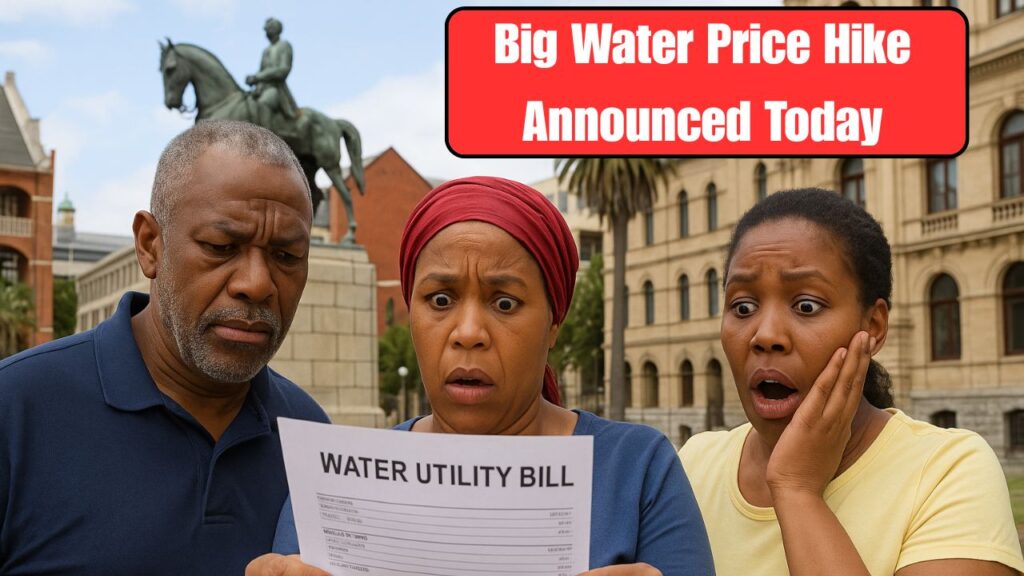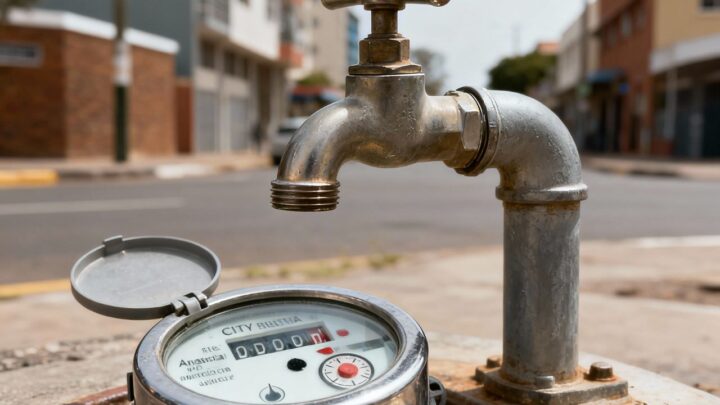South Africans are facing new water charges starting this month as municipalities across major cities update their tariffs to address rising infrastructure and supply costs. The revised rates will impact both residential and commercial users, with an average increase expected across Johannesburg, Cape Town, Durban, and Pretoria. Officials say the new charges are necessary to maintain water quality, repair aging pipelines, and secure long-term sustainability. Residents are urged to check their municipal bills for updated details. Let’s break down exactly how much more you’ll pay under the new 2025 water charge structure across South Africa.

New Water Tariff Rates for South African Residents 2025
The South African government has confirmed a nationwide adjustment in water tariffs effective October 2025. The new rates reflect a 7–12% increase depending on the city and consumer category. Johannesburg and Cape Town households are expected to see the sharpest rise, mainly due to infrastructure upgrades and dam maintenance projects. While low-income areas may receive subsidies through local water relief programs, middle and upper-tier users will pay significantly more. The Department of Water and Sanitation has emphasized that the new structure is designed to promote responsible water use and ensure equitable access to safe drinking water across provinces.
Impact of Increased Water Charges on South Africa’s Urban Households
The new water charges will especially affect urban households where daily consumption levels are higher. In cities like Durban and Pretoria, families using over 25 kilolitres per month will fall into higher tariff brackets. However, the South African government has maintained lower rates for essential household usage to protect low-income families. Municipalities have also introduced tiered billing systems, where per-litre costs rise with consumption. This step aims to reduce water wastage during the summer months and encourage conservation. Experts say these changes are part of a long-term plan to ensure sustainable water management amid frequent drought conditions in South Africa.
City-Wise Breakdown of 2025 South African Water Tariffs
The updated tariff schedule varies across major South African cities, reflecting local supply costs and infrastructure demands. While Cape Town continues its desalination and reservoir expansion programs, Johannesburg focuses on repairing underground pipelines to minimize leakage. Durban has introduced a “smart metering” system, allowing residents to track real-time water usage. Below is a clear comparison table of the latest 2025 rates to help residents understand their city’s new water charge adjustments.
| City | Previous Rate (per KL) | New Rate (per KL) | Average Increase | Effective From |
|---|---|---|---|---|
| Johannesburg | R33.10 | R36.90 | 11.5% | October 2025 |
| Cape Town | R29.50 | R32.80 | 11.2% | October 2025 |
| Durban (eThekwini) | R27.40 | R30.00 | 9.4% | October 2025 |
| Pretoria (Tshwane) | R28.60 | R31.20 | 9.1% | October 2025 |
| Port Elizabeth | R25.70 | R28.00 | 8.9% | October 2025 |

How South Africans Can Save on Monthly Water Bills
With the new water tariff hikes in place, South African households can adopt simple conservation strategies to reduce monthly costs. Installing low-flow showerheads, repairing leaking taps, and using water-efficient washing machines can lower consumption by up to 20%. Municipalities also encourage using greywater systems for gardens and cleaning purposes. In Cape Town and Durban, rebate programs offer partial refunds for water-saving equipment purchases. Public awareness campaigns continue to stress that every litre saved contributes to a sustainable future. By adopting these measures, citizens can offset much of the financial pressure caused by the 2025 tariff revision.
Frequently Asked Questions (FAQs)
1. When do the new South African water tariffs take effect?
The new tariffs officially come into effect from October 2025 across all major South African cities.
2. Which city in South Africa has the highest water rate increase?
Johannesburg and Cape Town are experiencing the highest increases, averaging between 11% and 12%.
3. Are there any government subsidies for low-income households?
Yes, the South African government offers water relief programs to help low-income families cope with higher charges.
4. How can residents reduce their water bills under the new tariffs?
By minimizing wastage, fixing leaks, and installing water-efficient devices, residents can significantly cut costs.






